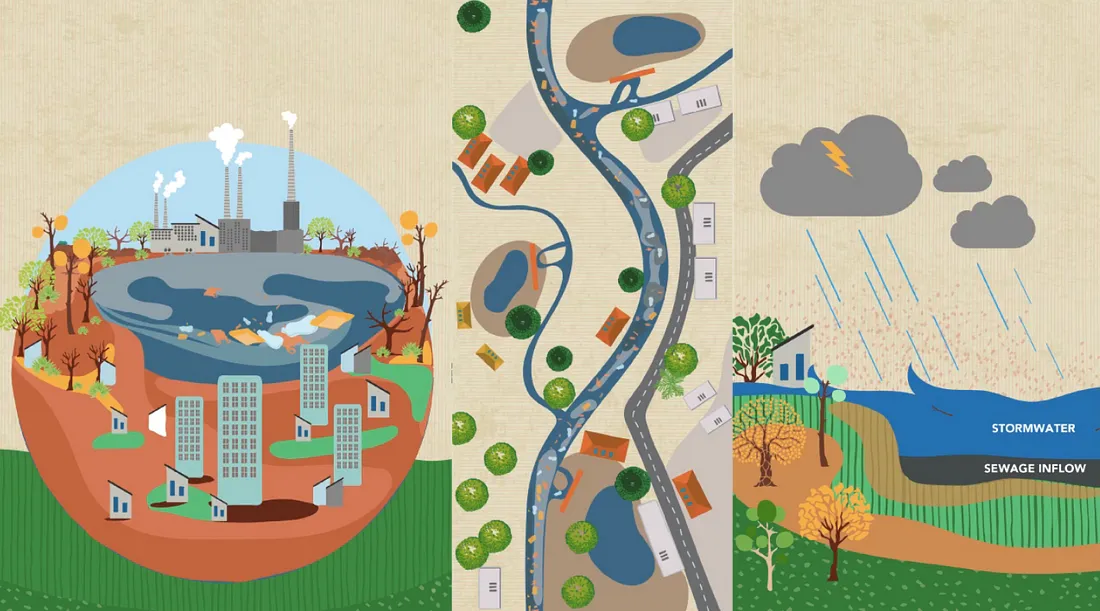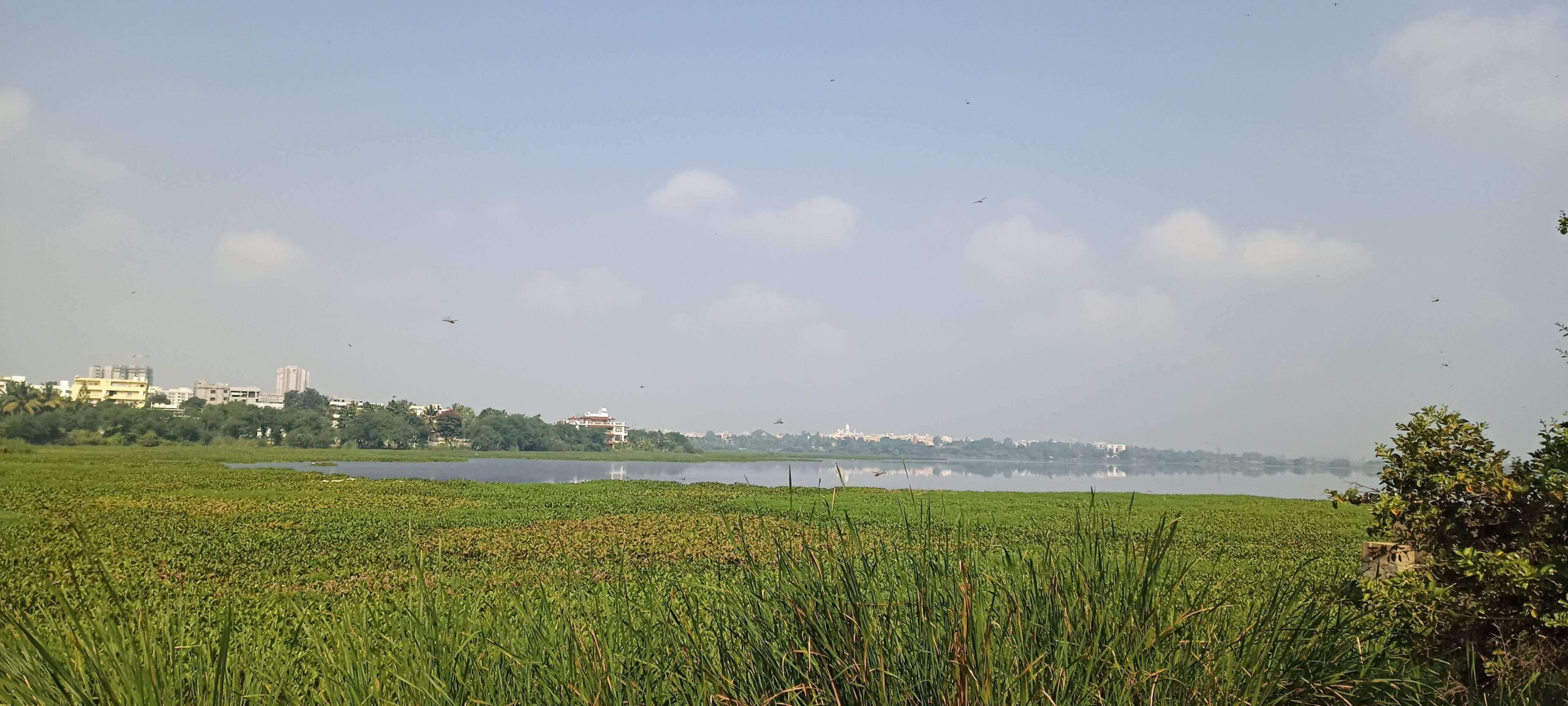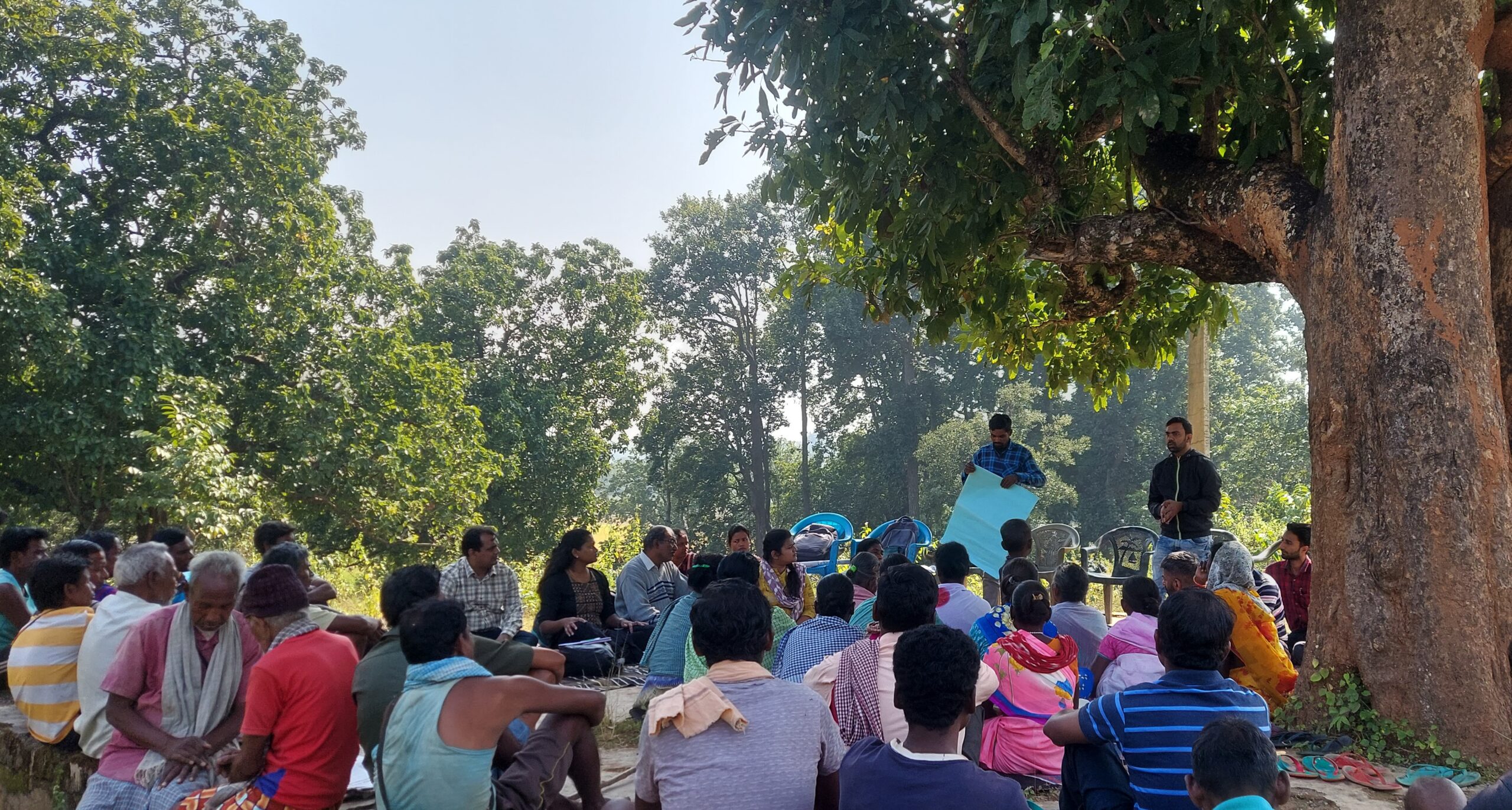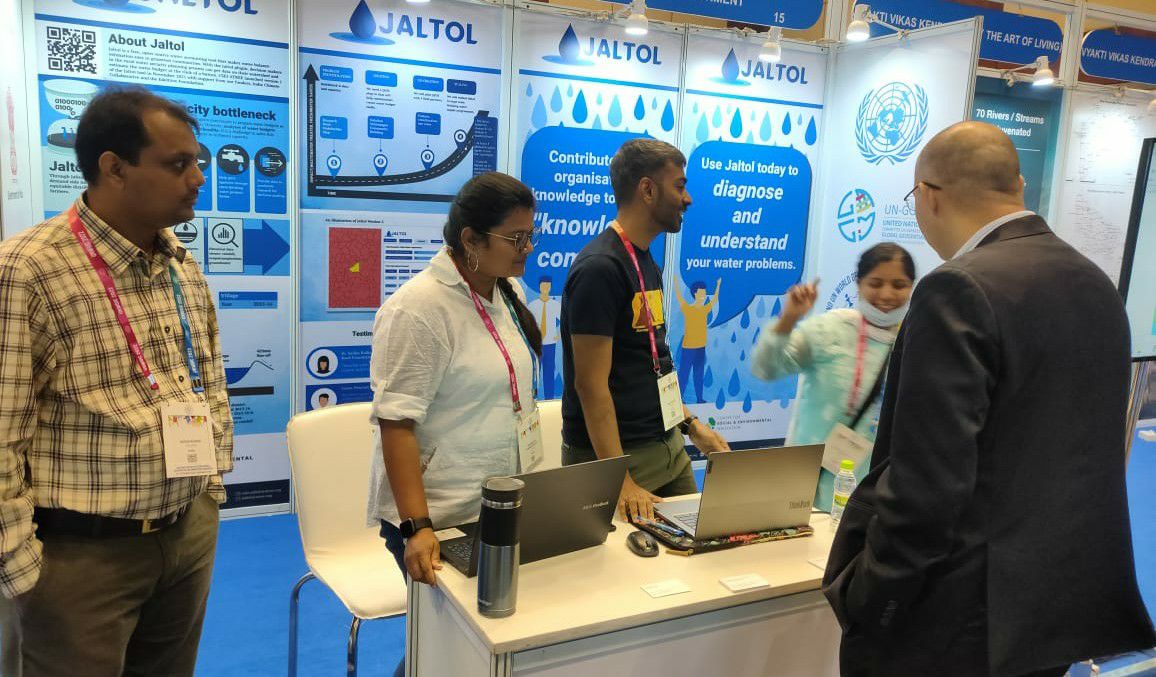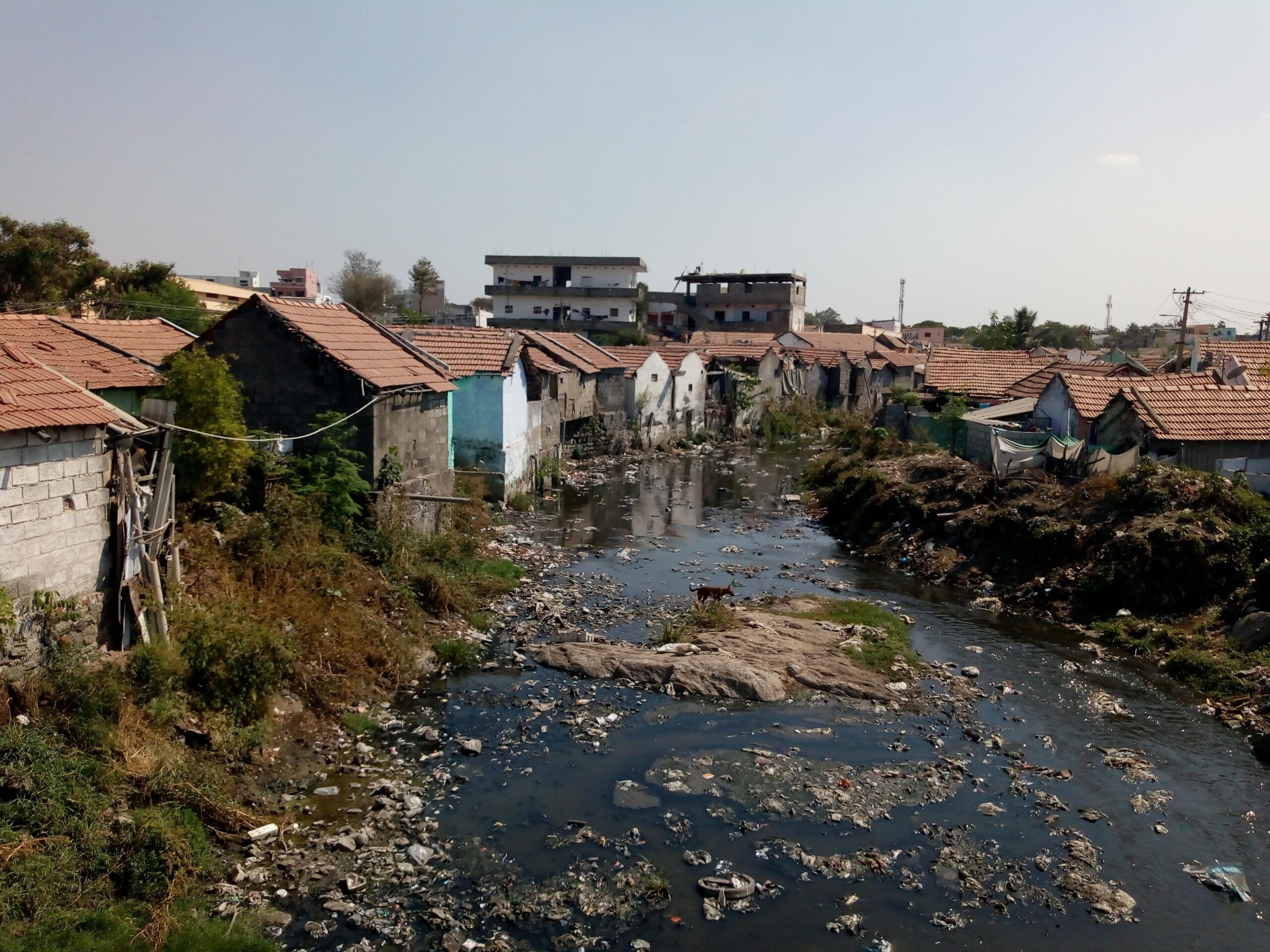Is the STP in your Apartment Always Out of Order?
A sewage treatment plant at Zed Woods, a residential building in Yelahanka, Bengaluru. Photo by Hari Prasad.
In 2016, the Bengaluru Water Supply and Sewerage Board (BWSSB) mandated the installation of decentralised Sewage Treatment Plants (STPs) in apartments. New apartments with 20 or more units measuring 2000 square metres (sq.m) and existing apartments with 50 or more units (or 5000 sq.m) were required to install STPs. This directive was aimed at solving both water scarcity and water pollution in the city by reusing treated wastewater for gardening, toilet flushing and washing common areas in apartment complexes.
Cities will be hard hit by climate change. They are also greenhouse gas generators accounting for nearly 70% of all global emissions. The Green Cities Initiative’s 2030 goal is to increase freshwater availability to six million people and preserve 10,000 hectares of degraded urban land and water bodies. Our ‘Pathways for building more climate resilient Indian cities’ research brief discusses in detail how we can bridge the current gaps in groundwater recharge through blue, green and grey infrastructure solutions.
Untreated wastewater is a significant part of the issue
Untreated wastewater when discharged into the environment increases carbon emissions by threefold. Wastewater treatment plants are critical in this regard because they remove methane and contaminants, cutting carbon emissions by two-thirds. However, nearly 80% of the 2,000 decentralised STPs in apartments do not meet the requisite standards, according to KSPCB reports.
The Green Cities Initiative wants to minimise carbon emissions from untreated wastewater due to malfunctioning STPs. We need well functioning STPs for good quality treated water and this blog provides six tips to save your failing STPs. But first, a little context about apartment STPs and why they fail.
Why do STPs fail?
STPs fail for a number of reasons but mainly because of poor design and lack of maintenance. Poor STP design includes oversizing or undersizing of pumps and tanks, incorrect selection of pumps for handling sewage and use of inappropriate STP technology. With operation and maintenance, the issues range from blowers being turned off due to noise pollution, irregular removal of muck and infrequent replacement of filter media.

STP operator at an apartment complex in Yelahanka, Bengaluru. Photo by Hari Prasad.
Treated water from a well-maintained STP should look clear and be odourless. It should also meet the effluent specifications set by the Karnataka Pollution Control Board (KSPCB). But the real problem here is that apartment residents are not well-versed with how STPs work and they are not involved in the STP selection process.
Who selects STPs in apartments?
STPs in apartments are chosen by builders with inputs on STP technology from STP consultants and Mechanical, Electrical and Plumbing (MEP) consultants. In a bid to cut costs, builders often opt for STPs with a low capital expenditure (CAPEX) that occupy less space. In turn, STP operators and MEP consultants favour familiar technologies to appropriate ones. They also ignore the operational expenses (OPEX), which will eventually rest with the residents of the apartment. It should be noted that at the time of handover of the STP from builders to the resident welfare association (RWA), there is a lack of knowledge transfer making STP upkeep difficult.
If apartment residents had a say in the matter, they would choose low OPEX STPs which are easy to maintain. Involving them in the STP selection process would ensure that their main concerns of low OPEX and ease-of-use are addressed.
To further our understanding of why STPs fail, we interviewed builders, STP consultants, MEP consultants and RWAs. We mapped their roles and motivations to identify the gaps in the process. Then we studied audit reports from 12 malfunctioning STPs ranging in capacity from 130–1500 kilo litres per day (KLD). Read our research brief “Challenges and opportunities in the residential decentralized wastewater treatment and reuse sector in Bengaluru” for more on STP technologies and the methodology we used.
If the STP in your apartment is not working properly, check these 6 components immediately:
1. Pumps
Pumps are used in STPs to move sewage through the various tanks. But poor use and maintenance has caused waterline leakages and multiple pumps are now required to get the job done. Multiple pumps add to the OPEX which rests with the residents. Pumps in STPs should be able to handle raw sewage without clogging the pump. They fail because builders have installed the wrong type of pump without the capacity to handle raw sewage.
Tip: Choose centrifugal pumps for transferring raw sewage.
2. Tanks
The aeration tank and the settling tank are the heart of the STP where most of the treatment happens with the help of microorganisms. The type of tank used in an STP depends on the technology. Tanks should be deep enough to accommodate low and high rates of sewage flow. If the tanks are of the incorrect depth, the sludge tends to be carried over to the final treated water tank. They should also have a provision for uniform aeration so that the sewage is mixed evenly. If the tank is not properly aerated, dirt and solidified muck tend to accumulate.
Tip: Include regular removal of muck in maintenance protocol.
3. Blower
Diffusers aerate and oxygenate the sewage and blowers supply compressed air to all the diffusers in the tank. Blowers are very important components because the entire STP comes to a halt if the blowers fail. Our interviews revealed that residents turn off the STPs at night to kill the noise from the blowers. Blowers make noise when acoustic linings and a concrete base have not been provided. STP consultants usually skip these provisions to cut overall costs by 10–15%.
Tip: Ask your builder or STP consultant if blowers have been fitted with acoustic linings and a concrete base.
4. Ventilation
Ventilation systems are installed for operator safety as it prevents the accumulation of harmful gases. Separate fans and ducts for both fresh air and exhaust should be provided. Ventilation systems should be designed to ensure regular air changes per hour, i.e. replacing all the air in an STP with new air every hour.
Our study found that residents turn off STPs at night and turn them back on in the morning to save electricity. This affects STP performance and makes them stink.
Tip: Make sure the ventilation system has suitable fresh air and exhaust ducts. 10 fresh air changes per hour is ideal in a well-run STP.
5. Food to microorganism ratio
Food to microorganism (F/M) ratio is a measure of the amount of food available to the microorganisms in an aeration tank. The STP consultant has to choose the F/M ratio carefully as it impacts the performance of the STP. Signs like filamentous bacterial growth in the aeration tank, partially treated sewage identified through odour and visual markers, and gradual failure of the plant will help residents identify whether the F/M ratio is inappropriate for their STP.
Tip: Make sure your STP’s F/M ratio is between 0.05–0.30.
6. Filter media
Filter media is the material through which wastewater passes in the last stages of treatment. Pressure Sand Filter (PSF) and Activated Carbon Filter (ACF) are tertiary treatment units in an STP that use filter media to remove the trace amounts of solids that escaped through the earlier stages. The filter media is made of sand and gravel in the case of PSF and activated carbon in ACF. The filter should be appropriately sized based on the site to ensure efficient functioning of the filter and to reduce servicing frequency. The filter media also gets clogged from time to time and needs to be replaced at regular intervals,
Tip: Include regular change of filters in maintenance protocol.
This checklist will come in handy for apartment residents struggling with STP maintenance. While residents and RWAs need to be included in the technology selection process for the STP, knowing your STP could help minimise STP failures. This checklist will also help them maintain their STP well, thereby reducing maintenance costs.
Our Grey to Green campaign — to reuse excess treated wastewater from decentralised STPs in apartments — is currently running pilots in Yelahanka and Mahadevapura zones in Bengaluru. We will use the treated wastewater for greening public spaces like parks and medians. To know more about this campaign, join our mailing list.
Written by Sahana Balasubramanian and Sneha Singh.
Published by Anjana Balakrishnan.
If you would like to collaborate, write to us. We would love to hear from you.
Follow us to stay updated about our work

